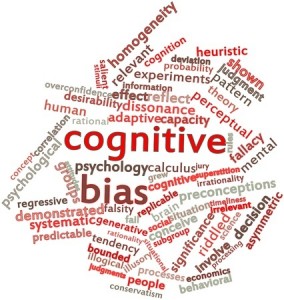By Rose O. Sherman, EdD, RN, FAAN
W e usually think of leadership experience as a strength when leading people, making decisions or initiating new projects. But there is a flip side to having a great deal of experience in that it can bias your thinking when innovating or dealing with new challenges. Over time as a leader as you confront similar situations, your brain develops “mental models” that make decision making easier. Recognition of patterns then becomes deeply embedded in our psyche and you only see what you are looking for. Our mental models influence both how we interpret situations and react to them. With experience bias, it can become very easy to discount new ideas as something that won’t work without testing them. We can try to bring order in our minds to situations that are in fact more complex than we acknowledge. When Steve Jobs was at Apple, he was a strong believer that a leader’s job begins and ends with reframing their mental models on an ongoing basis. Without continually reframing oneself and others in the ecosystem with new mental models, he believed that organizations cannot compete successfully in the global market place
e usually think of leadership experience as a strength when leading people, making decisions or initiating new projects. But there is a flip side to having a great deal of experience in that it can bias your thinking when innovating or dealing with new challenges. Over time as a leader as you confront similar situations, your brain develops “mental models” that make decision making easier. Recognition of patterns then becomes deeply embedded in our psyche and you only see what you are looking for. Our mental models influence both how we interpret situations and react to them. With experience bias, it can become very easy to discount new ideas as something that won’t work without testing them. We can try to bring order in our minds to situations that are in fact more complex than we acknowledge. When Steve Jobs was at Apple, he was a strong believer that a leader’s job begins and ends with reframing their mental models on an ongoing basis. Without continually reframing oneself and others in the ecosystem with new mental models, he believed that organizations cannot compete successfully in the global market place
Examples of Experience Bias in Managing Generation Y
In their book, Managing the Millennials, Espinosa, Ukleja and Rusch suggest that part of the reason that many managers feel challenged with leading this generation is that the values, attitudes and beliefs of this generation are counterintuitive to the “experience bias” of the Baby Boomers and Generation X. Some example of experience bias that they noted from their research included the following:
1. Questioning the Organizational Commitment of Gen Y Employees – Generation Y value work-life balance perhaps more than any other generation. Baby Boomer managers are part of cohort that was extremely committed to their work often at the expense of their families. They become frustrated with their Generation Y employees who look for more balance in their lives and won’t automatically work overtime or accept organizational policies and procedures with a good explanation. These behaviors have arisen out of their personal experiences where they watched their parents downsized and find themselves often without a full benefit package.
2. Reacting to the Generation Y’s Informality in the Supervisor-Employee Relationship – Generation Y prefers informality in relationships and resists organizational hierarchies. A Generation X or Baby Boomer manager may reflect on their own early work experiences where they would never have considered calling a supervisor by their first names or emailing the Chief Executive. Protocols in many organizations are rapidly changing to become less hierarchical . Experience bias might lead you to believe that this is a bad thing but it is in fact just different and norms evolve over time.
3. Believing that Career Development is a Step by Step Process versus the Paths Generation Y is Seeking – One of the strongest motivators for Generation Y employees is a supervisor who provides them with career development. The experience bias of some managers leads them to believe that this is generation who are unwilling to pay their dues. Generation Y wants to know where a job will take them – “what’s next”. If this development is not provided, they will leave an employer.
Challenging your Experience Bias
There are three components to challenging your experience bias:
- Reflection – take a step back and ask yourself why you believe what you believe.
- Be Curious – when something is counter-intuitive to your experience, be curious as to why things have changed.
- Be Willing to Be Wrong – always be willing to reconsider your viewpoints and change your mind when factors in the environment change.
As nurse leaders, we need to be vigilant about the mental models that stand in the way of important new innovations and practices. The reality is that our healthcare environment needs innovation and as leaders, we need to model the way by being open-minded.
Read to Lead
Espinoza, C., Ukleja, M. & Rusch, C. (2010). Managing the Millennials. New York: Wiley & Sons.
© emergingrnleader.com 2014


 LinkedIn
LinkedIn Instagram
Instagram